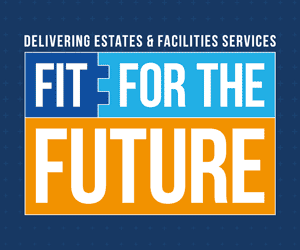The long-awaited 10 Year Health Plan launches today, with the Prime Minister Keir Starmer promising to end “the status quo of ‘hospital by default’,” and setting out an ambition for the majority of outpatient care to happen outside of hospitals by 2035.
The government’s plan for a Neighbourhood Health Service will see multidisciplinary teams, some based entirely under one roof, set up in local communities. This will include staff like nurses, doctors, social care workers, pharmacists, health visitors, palliative care staff and paramedics. Community health workers and volunteers will also play a pivotal role in these teams, and local areas will be encouraged to trial innovative schemes like community outreach door-to-door – to detect early signs of illness and reduce pressure on GPs and A&E.
The Neighbourhood Health Service will reduce pressure on hospitals, enabling them to deliver the best care for patients who truly need to be there. It will also provide easier, more convenient access to a full range of healthcare services closer to home, so patients no longer need to make lengthy trips to hospitals.
The neighbourhood teams will be housed in new health centres, which will eventually be open 12 hours a day, six days a week within local communities. As well as bringing patient services that have historically been based in hospital into the community, such as diagnostics, post-operative care and rehab – the new Neighbourhood Health Service will also offer services like debt advice, employment support and stop smoking or weight management, all of which will help tackle issues that affect people’s health.
Three big shifts
Moving care from hospitals into the community is just one of the three big shifts set out by the government. Analogue to digital and sickness to prevention are the other two.
Ending the status quo of “hospital by default” means a new, preventative principle that care should happen as locally as it can: digital-by-default, in a patient’s home where possible, in a neighbourhood health centre when needed, in a hospital if necessary. This approach will make access to healthcare more convenient for patients and easier to fit around their day to day lives, rather than disrupting people’s work and personal lives.
Bringing the NHS into the digital age, the government’s ambition is to ensure staff benefit from the advantages and efficiencies available from new technology. This includes rolling out groundbreaking new tools over the next two years to support GPs. AI scribes will end the need for clinical notetaking, letter drafting, and manual data entry to free up clinicians’ time to focus on treating patients. Saving just 90 seconds on each GP appointment can save the same time as adding 2,000 more doctors into general practice.
Digital telephony, more GPs and new contracts to allow practices to cover a wider geographical area are also in the plan.
Sir James Mackey, Chief Executive of NHS England says: “The Neighbourhood Health Service is a huge opportunity for us to transform how we deliver care over the next decade – starting right on people’s doorsteps.
“By bringing together a full range of clinicians as one team, we can deliver care that’s more accessible, convenient and better for patients, as well as reducing pressures on hospitals.”
Matthew Taylor, Chief Executive of the NHS Confederation, describes the introduction of a Neighbourhood Health Service as a “vital first step towards a more preventative, community-based NHS.”
He adds: “Delivering on this ambition will require sustained investment in digital and estates, support for the NHS’s workforce, and a commitment to decentralise national control by empowering local leaders to do what is best for their populations.”
The government has set out its plan, what is needed now is the detail of how this will be delivered.










